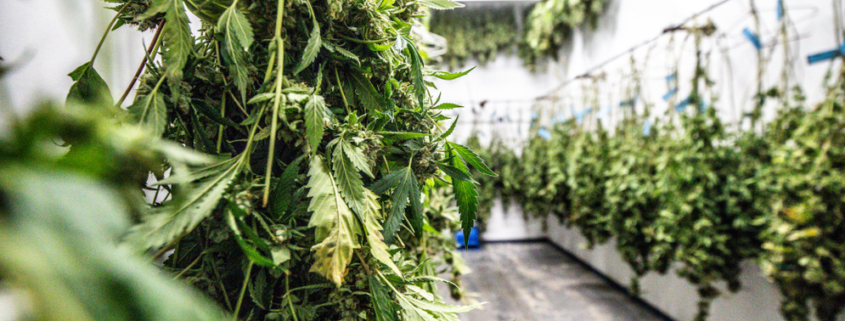Harvest time is extremely exciting for all hemp farmers. After a year’s worth of planning and hard work, you finally get to realize the fruits of your labor. While a good harvest is a cause for celebration, there are still several steps you need to take to get your hemp flowers ready for market. Properly drying and curing your flowers is critical for preserving delicate cannabinoids, trichomes, and terpenes.
It’s wise to think about your harvest plans early on in the growing season. Far too many growers put hemp crops in the ground without even considering how they will dry and cure their flowers. This lack of foresight can have dire financial consequences.
To help you get ahead of the curve this harvest season, we’re here to explore the process and importance of drying and curing flowers in more detail.
Drying Hemp Flowers and Curing Overview
There are several reasons why properly drying and curing your hemp flowers is important. For starters, following the best practices for drying and curing will protect flowers against mold. These critical steps also protect the aesthetic “bag appeal” of your flowers. Similarly, correct drying and curing will ensure your flowers have the right moisture consistency for trimming and processing.
Consider the Whole Harvest Process
Drying and curing are two important steps in the harvest process. Importantly, every step must happen in a specific order so you can get your hemp flowers ready for market. After hemp plants are harvested, they are dried, bucked, trimmed, and finally cured. Skipping any of these critical steps can ruin a crop or greatly inflate labor expenses.
Facilities for Drying Hemp Flowers
You need the right type of infrastructure to properly dry and cure your hemp harvest. Commercial operations generally have dedicated “drying facilities” where they can carefully control heat, humidity, and airflow. These buildings should also be completely dark on the interior.
Environmental Requirements
To dry hemp flowers correctly, you must create the right environmental conditions. Experts feel hemp flowers dry best at temperatures between 60-70 deg Fahrenheit and at humidity levels between 50-60%. This careful balance will ensure flowers dry at just the right speed.
How to Dry Hemp
The process of drying hemp flowers is focused on getting them to the right moisture consistency. In doing so, you create the best consistency for trimming, while also protecting the integrity of trichomes, terpenes, and pistils.
We advise our clients to aim for moisture consistency between 10-15% when drying. This amount of water will ensure flowers retain their structure, while also not molding in the bag.
When harvesting, most hemp flower producers choose to cut entire plants, then hang them upside down for drying. If you have the correct environment in your drying facility, you can pack plants tightly on a line to maximize square footage. If your humidity levels are high, packing them too tightly could cause mold issues.
Airflow
Proper airflow is critical when drying hemp flowers. Throughout drying, you should keep air moving in your facility with wall fans, industrial blowers, and inline fans. Even more, you should exchange the air in your drying room with fresh air from outside with vent fans, booster fans, or HVAC systems.
Equipment
Producers use a variety of equipment for drying hemp flowers. Hemp drying technology includes dehumidifiers, heaters, blower fans, carbon filters, inline fans, and commercial HVAC systems. Your chosen equipment will largely be dictated by the environmental constraints of your geography.
Importance of Curing Flowers
Inexperienced farmers often fail to recognize the importance of curing hemp flowers. However, curing is the last critical step in the harvest process to get your flowers ready for the market. Not only does proper curing protect the structural integrity of your flowers, but it also brings out the very best terpene expression of your hemp crop.
Proper curing practices help you avoid leaving your hemp flowers too dry or too wet. There are a number of reasons why the incorrect moisture content in hemp flowers can do serious damage to a harvest.
If you put damp hemp flowers directly into a plastic bag without curing them, you are inviting disaster. Not only can excess water in flowers cause your harvest to mold, but it can also wreak havoc on your crop’s terpene profile. Importantly, proper curing allows bacteria to break down chlorophyll in hemp flowers. If you skip this step, your harvest will likely smell like hay instead of delicious terpenes.
Having the right moisture consistency in hemp flowers is also critical for retaining their structural integrity. If you don’t cure your flowers, you risk drying them out too far. When this happens, flowers are easily destroyed during transport through the hemp product supply chain.
The Best Way to Cure Hemp Flowers
The process of curing hemp is aimed at keeping flowers looking and smelling fresh long after harvest. By rotating your flowers between sealed and open containers, you allow chlorophyll to break down, while also ensuring the uniform distribution of water throughout flowers.
For most commercial hemp producers, curing often takes several days. The best way to cure hemp on a commercial scale is to place flowers in air-tight bins or barrels after they are dried, bucked, and trimmed. At the outset, you should seal the container tight for 12 hours, then open the container and “burp” the flowers for another 12 hours. Repeat this process over several days while continuously lessening the time that the container is open for burping.
When your hemp flowers are “springy” to the touch, and stems “crack” when bent with force, your flowers are cured and ready for final packaging. To remove the guesswork, we recommend you track moisture levels throughout the curing process with a hygrometer.
Contact High Grade Hemp Seed
Not only do we provide the best hemp CBD genetics on the market, but we also employ some of the top growers in the industry. Contact us today to learn more about properly drying industrial hemp and CBD hemp harvests.



